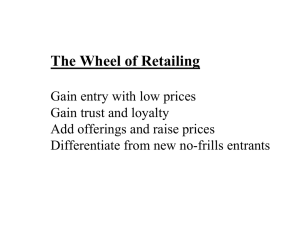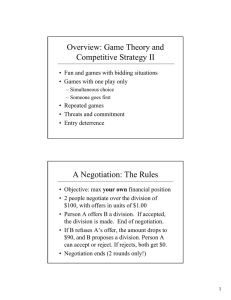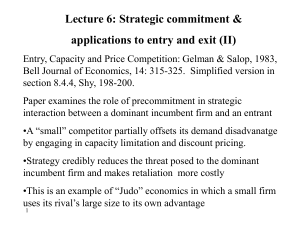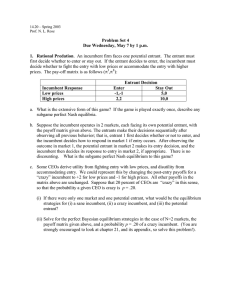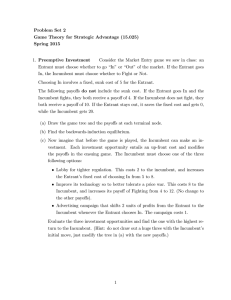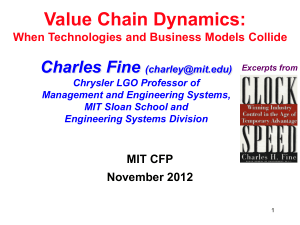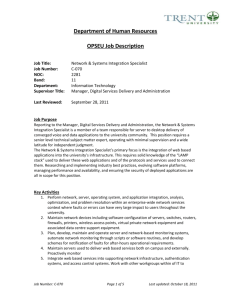Lecture: Entry strategies
advertisement
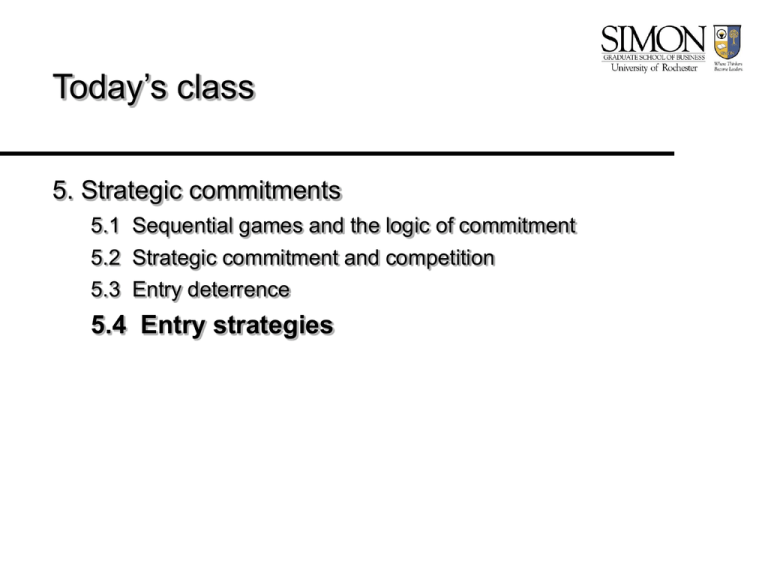
Today’s class 5. Strategic commitments 5.1 Sequential games and the logic of commitment 5.2 Strategic commitment and competition 5.3 Entry deterrence 5.4 Entry strategies Entry from the perspective of the entrant: The paradox of entry barriers: – A high barrier means you can’t get in. – A low barrier means profits are low. Why enter then? Solution: entry is attractive if entrant can scale entry barriers more cheaply than others. Entry Strategies Most entrants are small Aim: make aggressive reaction by incumbents less likely Increase expected cost of driving entrant out – Signal determination to stay in – Signal willingness to fight Decrease expected benefit of driving entrant out – Stay small and/or differentiate Judo Economics = Use rival’s strength and inflexibility to your advantage More specifically, stay small or differentiate to discourage incumbent from going after you Logic: – If you enter with low price and try to get large share of market, strong incumbent will fight back => you lose – Suppose you enter with small capacity instead. If the incumbent matches, gets lower margin on all customers Incumbent may be better off leaving small share of market to you! – Related: United vs. TWA’s response to AA’s Value Pricing Works even if entrant has neither cost nor benefit advantage Example: Fox’s entry in TV network market in 1986 Began with only two hours of late-night programming (instead of prime-time): signal intention to stay small Targeted a young urban audience (instead of family): differentiate The role of Murdoch’s reputation as empire-builder: signal determination to stay in, rationally or not Public statements about NewsCorp’s cash reserves & Fox’s willingness to take losses: signal determination to fight if necessary Moves that reduced networks’ incentive to fight Fox Other examples Minnetonka’s introduction of Softsoap in 1980 – P&G etc. were reluctant to enter brands in detergent category Integration of U.K. supermarkets into retail gasoline in early 1990s (a failed attempt at Judo…) – Low prices to lure customers to supermarkets – Perhaps hoped that Shell etc. would not respond, but they did. Caveats 1. There needs to be reason why targeted matching by incumbent is not possible – E.g. “rule” about same price for all customers – Value-based connection between market segments, e.g. risk of jeopardizing main brand 2. Entrant needs to convince incumbent of intention to stay small – Was Value Pricing triggered by entry of Braniff Airlines in Dallas (see BDSS)? 3. Judo strategies often buy valuable time, but do not directly create sustainable competitive advantage
